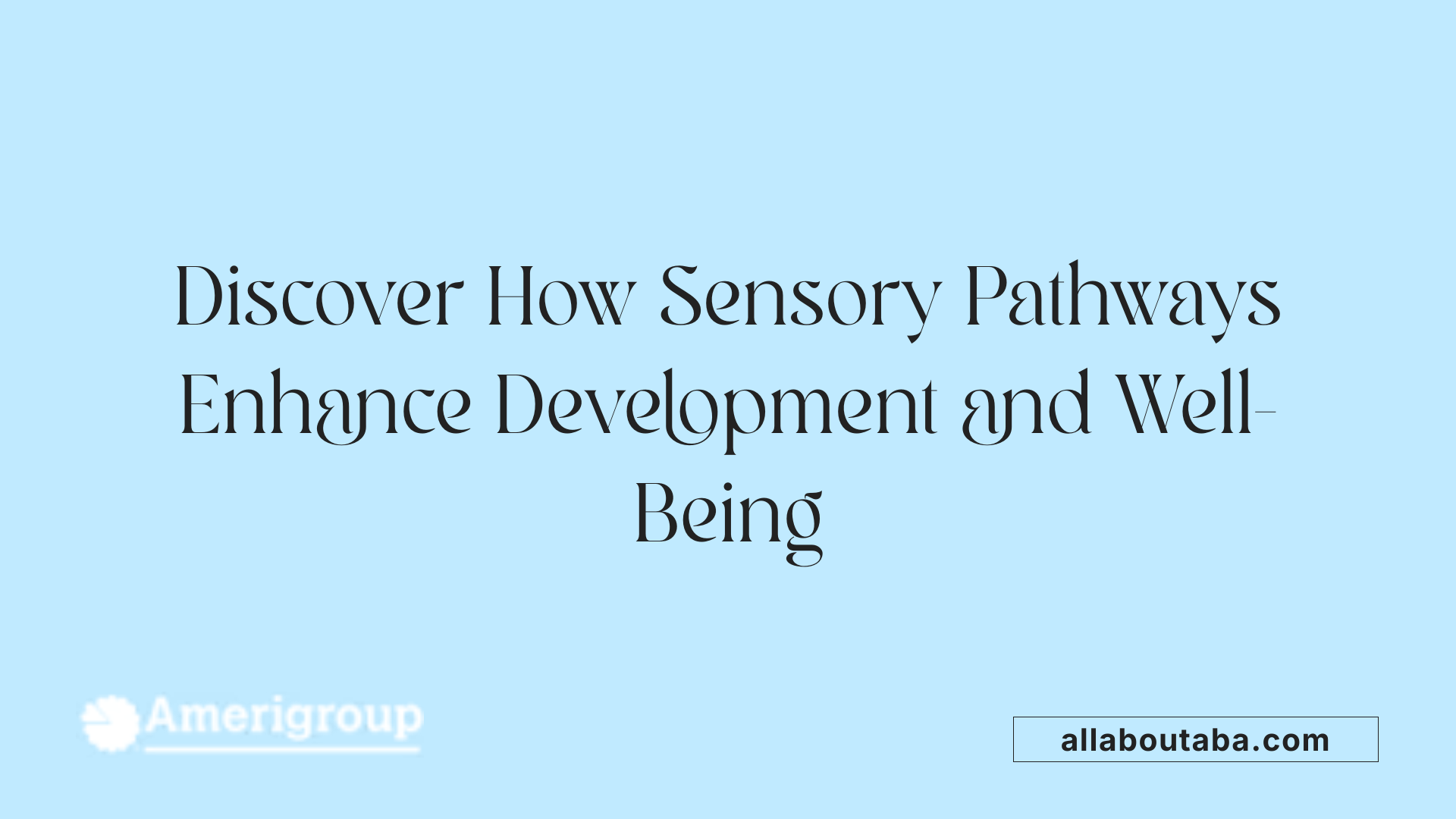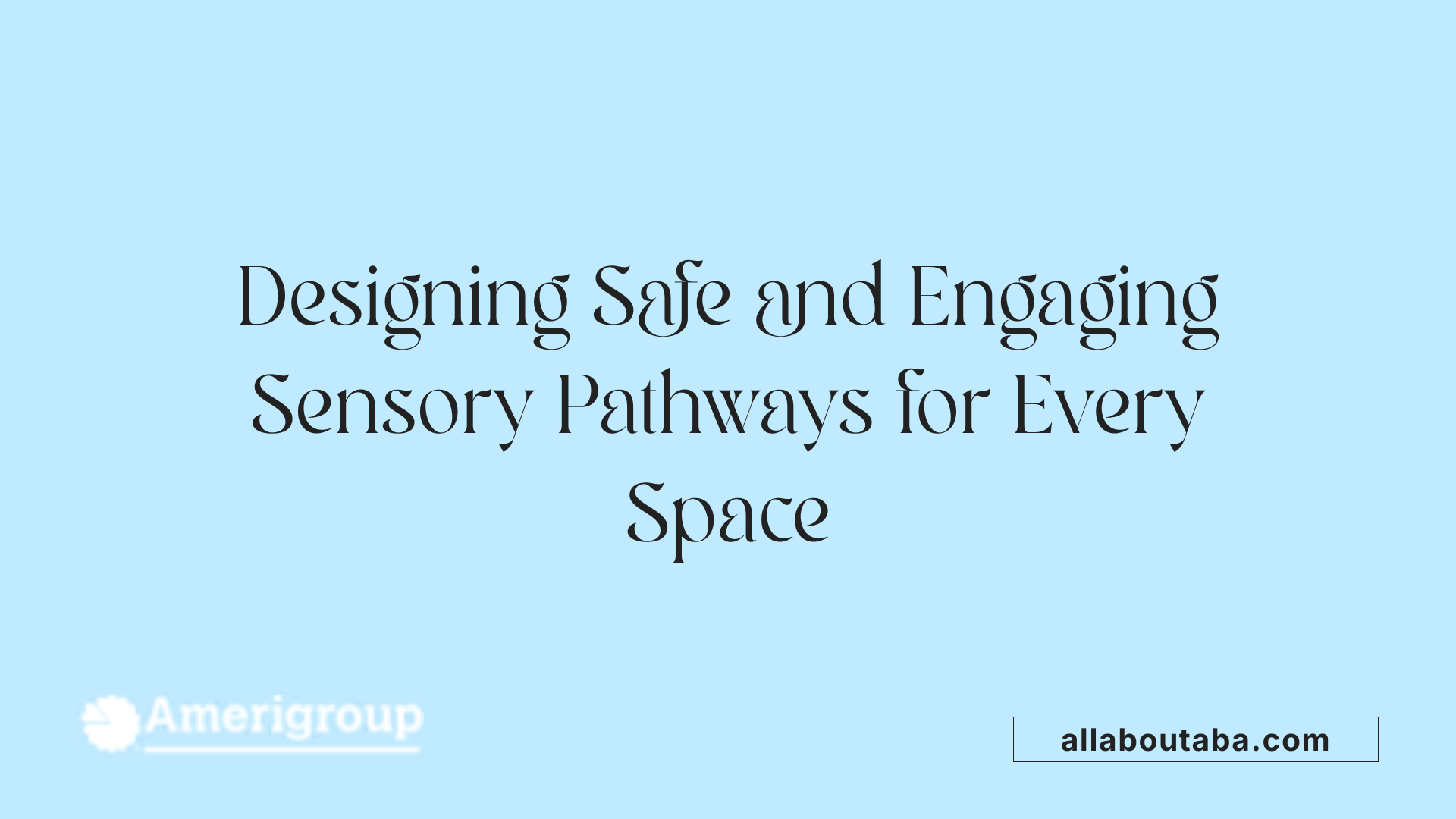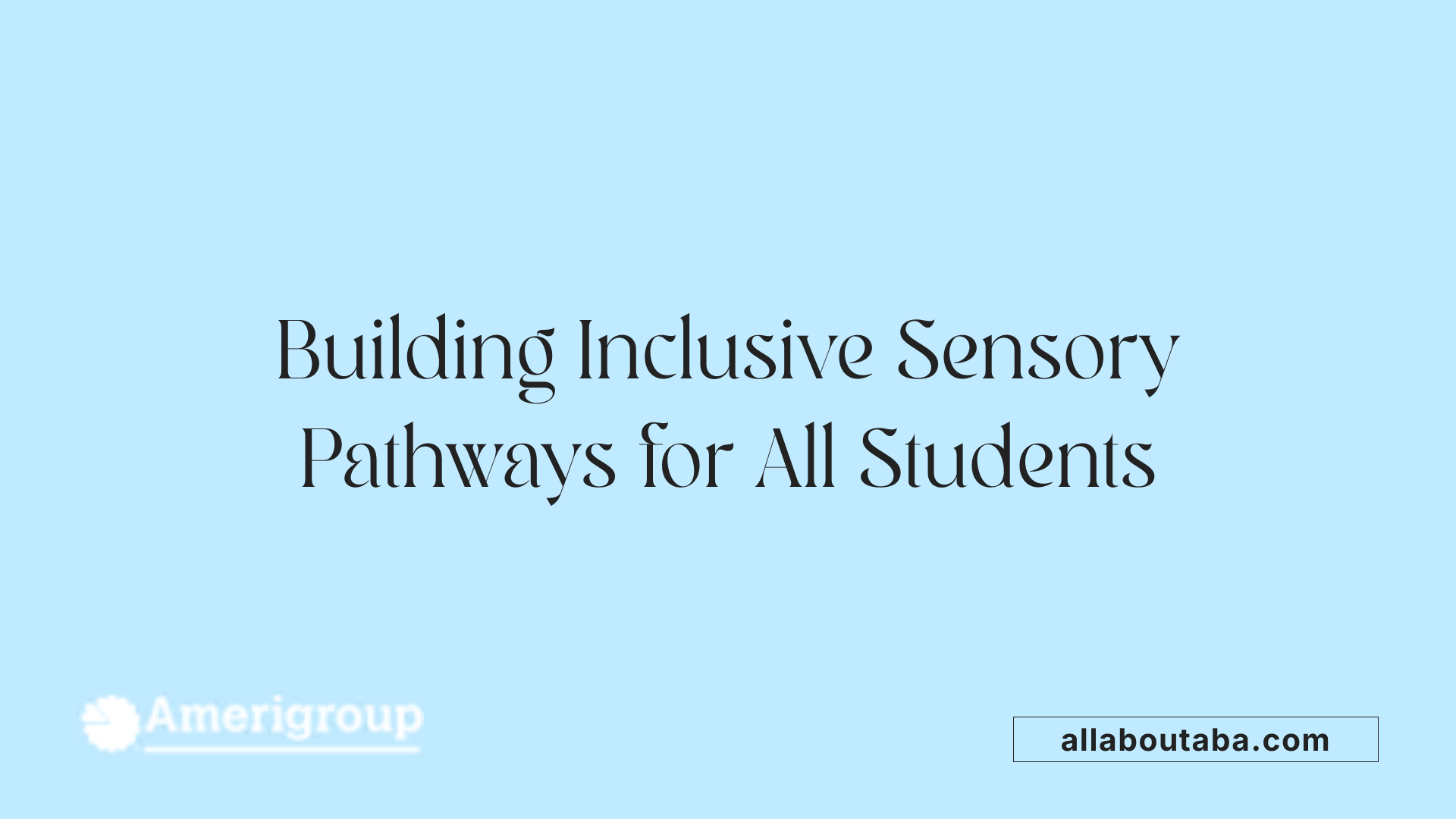Creating Supportive, Sensory-Rich School Spaces
Incorporating sensory pathways into school environments transforms typical hallways and play areas into engaging and inclusive spaces. These pathways are specially designed to cater to children with autism and sensory processing disorders by providing targeted sensory input that promotes emotional regulation, motor development, and cognitive growth. This article explores practical strategies for designing, implementing, and maintaining autism-friendly sensory pathways in schools, emphasizing the importance of collaboration among educators, parents, and specialists.
Understanding the Benefits of Sensory Pathways

What are the benefits of sensory pathways for children with autism and sensory processing disorders?
Sensory pathways provide a multitude of advantages for children on the autism spectrum and those with sensory processing challenges. These pathways are designed to promote sensory integration and help develop neural connections by engaging children in targeted sensory activities.
One important benefit is the reduction of overstimulation and neurological gridlock. Sensory pathways offer structured sensory input, helping children process information more efficiently and gain better control over their emotional responses.
Incorporating various movements, visual signals, and tactile stimuli can significantly improve motor skills, coordination, and body awareness. Activities like jumping, balancing, and crawling not only enhance physical development but also encourage cognitive growth and independence.
Sensory pathways also aid in behavioral regulation by calming nervous systems and reducing anxiety. They serve as effective tools for self-regulation, especially during moments of sensory overload.
Moreover, these pathways foster social interactions and engagement. Group activities and shared sensory experiences promote peer connections, social skills, and collaborative play.
Overall, sensory pathways create inclusive and stimulating environments that address individual sensory needs, support motor and cognitive development, and nurture emotional and social well-being. By integrating these pathways into educational and home settings, children can experience improved focus, greater independence, and a calmer, more balanced state of mind.
Materials and Layout Considerations for Sensory Pathways

What materials and layout considerations should be kept in mind when creating sensory pathways in educational environments?
Designing sensory pathways involves careful selection of materials and layout to ensure safety, durability, and sensory engagement. These pathways are meant to provide inclusive sensory input that supports children’s motor, cognitive, and emotional growth.
Selection of Materials Choosing safe, sturdy, and multi-sensory materials is essential. Textured surfaces such as foam, textured tape, carpet tiles, textured rocks, and natural elements like grass and sand stimulate different sensory receptors. Brightly colored decals and stickers can add visual interest and calming or stimulating cues. High-quality adhesive materials like colored duct tape and decals are useful for creating durable, visually appealing pathways.
Incorporation of tactile and visual elements Tactile features such as textured rocks or foam mats paired with colorful stickers or decals serve as sensory prompts. Use of visual stimuli like bright colors and calming or energetic sounds can be integrated within pathways to support different sensory needs and preferences.
Designing for safe navigation Pathways should be clearly defined with unobstructed routes, avoiding hazards such as sharp corners or loose objects. Surfacing needs to be slip-resistant and firm enough to support different movements. Including prompts such as shapes or symbols guides children safely through activities like jumping, balancing, or crawling.
Movement-promoting items Incorporating elements like balancing beams, hopscotch layouts, animal yoga prompts, and obstacle courses encourages dynamic movement essential for sensory and motor development. These enhance proprioceptive and vestibular input while being engaging.
Research-informed sequences Movement sequences based on developmental research effectively target motor skills and sensory integration. Activities such as stepping, bending, stretching, and visual tracking are prime examples that can be incorporated into pathway design.
Indoor and outdoor adaptability Paths should be versatile enough for both indoor and outdoor settings. Outdoor paths often provide larger spaces and opportunities for large muscle activities, while indoor paths can be designed with temporary or fixed materials suitable for confined spaces.
Supporting comprehensive development Thoughtfully laid out sensory pathways boost physical coordination, cognitive focus, and social-emotional skills. Properly structured pathways can be customized to meet individual needs, encouraging participation and inclusivity.
In summary, effective sensory pathways combine safe, engaging, and durable materials with thoughtful layout design. This creates an environment that supports sensory regulation, motor skills, and learning, whether inside classrooms or outside play areas.
Designing and Implementing Sensory Pathways in Schools
How can schools design and implement sensory pathways that support children with autism and sensory processing needs?
To effectively support children with autism and sensory processing challenges, school environments should incorporate sensory pathways that cater to their unique sensory profiles. This involves close collaboration with professionals such as occupational and physical therapists, as well as engaging students and their families in the planning process.
Sensory pathways can be created both indoors and outdoors using accessible, multisensory materials. For example, pathways may include painted shapes, textured rocks, grass, decals, and stickers. These elements not only provide visual appeal but also offer various tactile stimuli that help in sensory-motor engagement.
Movement activities are at the core of effective pathways. Activities like jumping, balancing on beams, crawling, and following visual or auditory prompts activate different parts of the brain. Such movement supports emotional regulation, focus, and motor skill development.
Classroom modifications to reduce sensory overload are equally important. This can involve dimming lights, choosing muted or neutral colors, and setting up quiet zones where children can self-regulate when overwhelmed.
Incorporating regular movement breaks through sensory walls and structured pathways helps children reset and sustain attention. The pathways can include prompts for breathing exercises, yoga poses, or calming challenges, making them versatile tools for emotional and sensory regulation.
Overall, creating inclusive, thoughtfully designed sensory pathways enhances learning experiences and emotional well-being for children on the autism spectrum. By combining movement, sensory enrichment, and environmental considerations, schools can foster a supportive atmosphere that promotes participation and concentration.
Additional Design Tips and Recommendations
| Element | Description | Purpose |
|---|---|---|
| Indoor and outdoor placement | Pathways can be installed in hallways or playgrounds | Flexibility and accessibility |
| Materials | Painted shapes, tactile rocks, grass, decals, stickers | Sensory stimulation and motor skills |
| Movement activities | Jumping, balancing, crawling, following prompts | Activation of sensory systems |
| Environmental modifications | Dimmed lights, muted colors, quiet zones | Reduce sensory overload |
| Routine integration | Regular breaks, sensory and calming walls | Skill reinforcement and consistency |
| Collaboration | Engage specialists, families, and students | Tailored and inclusive design |
In sum, the development of sensory pathways in schools is a proactive approach that combines sensory input with movement, environmental adjustments, and routine practices. This holistic strategy not only supports children’s sensory needs but also encourages engagement, regulation, and success in the classroom.
Best Practices for Implementation and Safety

How can involving specialists, educators, and parents improve sensory path setup?
Involving a team of occupational therapists, physical therapists, teachers, and parents from the start ensures that the sensory pathways are tailored to the individual needs of children. Professionals can provide valuable insights into sensory sensitivities and motor abilities, helping to select appropriate activities and materials. Regular communication among these groups promotes consistency and allows for adjustments based on the child's progress.
How should sensory paths be introduced and monitored?
A gradual approach is most effective. Start with simple, manageable activities to prevent overwhelming the child. Observe how they respond to different stimuli and behaviors during use, and adjust the pathway accordingly. Continuous monitoring helps identify what works best, ensuring the pathway remains beneficial and safe.
What types of sensory stimuli should be incorporated?
Variety is important to stimulate multiple senses. Visual elements like bright colors or calming images can engage children, while tactile materials such as textured tapes and foam encourage sensory exploration. Incorporating vestibular activities like balance beams, along with proprioceptive exercises such as jumping or squatting, supports overall sensory integration.
How can activities be made engaging and educational?
Design activities that include learning opportunities, like incorporating alphabet puzzles or counting challenges into movement tasks. Making the pathway fun, such as adding obstacle courses or animal yoga poses, motivates children to participate actively. Using familiar themes and encouraging creativity also enhances engagement.
Why is supervision and routine integration important?
Supervision ensures safety, especially during active movements involving jumping, balancing, or crawling. Consistent placement within daily routines—such as during transitions from recess to classroom or after lunch—helps children anticipate and benefit from these sensory breaks. Routine use also fosters a sense of predictability and emotional security.
How should effectiveness be assessed and pathways adapted?
Regularly observe children's responses and gather feedback from teachers and parents. If certain activities seem ineffective or cause discomfort, modify or replace them. Keep documentation of changes and outcomes to refine the sensory pathway, ensuring it supports each child's development optimally.
What safety measures are necessary?
Prevent hazards by avoiding sharp edges, ensuring stable installation of activities, and securing materials. Supervision is critical, especially in home settings where DIY pathways are created. Use non-toxic, durable materials and check for wear and tear regularly to maintain a safe environment.
| Aspect | Best Practice | Additional Details |
|---|---|---|
| Planning | Involve specialists, educators, and parents | Ensures personalized and effective paths |
| Introduction | Gradual, step-by-step | Prevents overwhelm and allows assessment |
| Sensory Stimuli | Incorporate visual, tactile, vestibular, and proprioceptive inputs | Supports comprehensive sensory integration |
| Engagement | Make activities fun and educational | Enhances motivation and learning |
| Supervision | Always supervise use | Critical for safety and proper technique |
| Routine | Embed in daily schedules | Promotes consistency and emotional stability |
| Assessment | Regular review and adaptation | Keeps pathways effective and safe |
| Safety | Follow hazard prevention guidelines | Use appropriate, durable, and non-toxic materials |
Creating effective sensory pathways requires careful planning, ongoing assessment, and safety considerations. When implemented thoughtfully, these pathways can significantly enhance emotional regulation, attention, and sensory integration for children with diverse needs.
Creating Inclusive, Sensory-Friendly Pathways
 Developing pathways that cater to the sensory needs of all students requires a careful, inclusive approach. First, schools should assess the sensory and physical needs of their students through observations, surveys, and consultations with specialists like occupational therapists and physical therapists. This helps identify the types of stimuli, textures, and movements that will be most beneficial.
Developing pathways that cater to the sensory needs of all students requires a careful, inclusive approach. First, schools should assess the sensory and physical needs of their students through observations, surveys, and consultations with specialists like occupational therapists and physical therapists. This helps identify the types of stimuli, textures, and movements that will be most beneficial.
Collaboration is essential. Teachers, therapists, students, and families should work together to plan and design the pathways. Involving students in the process empowers them and ensures the routes align with their preferences and needs. It’s important to select materials that are safe, durable, and capable of providing diverse sensory input. Options include textured tapes, foam, natural elements, decals, and tactile surfaces, both indoors and outside.
Once designed, these sensory paths should be piloted. Gathering feedback from users helps identify necessary modifications for better accessibility and effectiveness. Adjustments might include changing textures, adding visual cues, or modifying activities to suit different sensitivities.
School-wide implementation follows, supported by clear guidance for teachers and staff. Proper orientation ensures everyone understands how to utilize the pathways effectively. Routine use during transitions or designated break times can improve focus, emotional regulation, and motor skills.
Community involvement adds value. Child-led projects and local resources can be harnessed to enrich pathways, making them more engaging and sustainable. By adopting this comprehensive, collaborative approach, schools can create sensory pathways that are inclusive, supportive, and beneficial for all students.
Fostering a Culture of Sensory Inclusion
Creating and implementing sensory pathways in schools is vital for fostering an inclusive environment that supports the diverse needs of children with autism and sensory processing disorders. By carefully designing multisensory routes using safe, engaging materials and involving a collaborative team of specialists, educators, and families, schools can provide meaningful sensory input that improves regulation, focus, and overall well-being. Regular assessment, adaptation, and community involvement ensure these pathways remain effective and inclusive. Ultimately, these sensory paths are not just physical structures but pathways to greater understanding, engagement, and success for every student.
References
- Creating a Sensory Hallway: Tips for Schools and Homes
- A Hop, Skip, and a Jump: Creating Your Own Sensory Path
- How to Use a Sensory Path
- 10 Sensory Path Ideas for Your School
- How to Create a Sensory-Friendly Classroom
- 20 Ways To Create Outdoor Sensory Paths For Children
- Setting Up a Sensory Friendly Educational Environment







